By Leen Randell
Updated: Jul 19, 2024
10 Best Herbal Creams For Insomnia
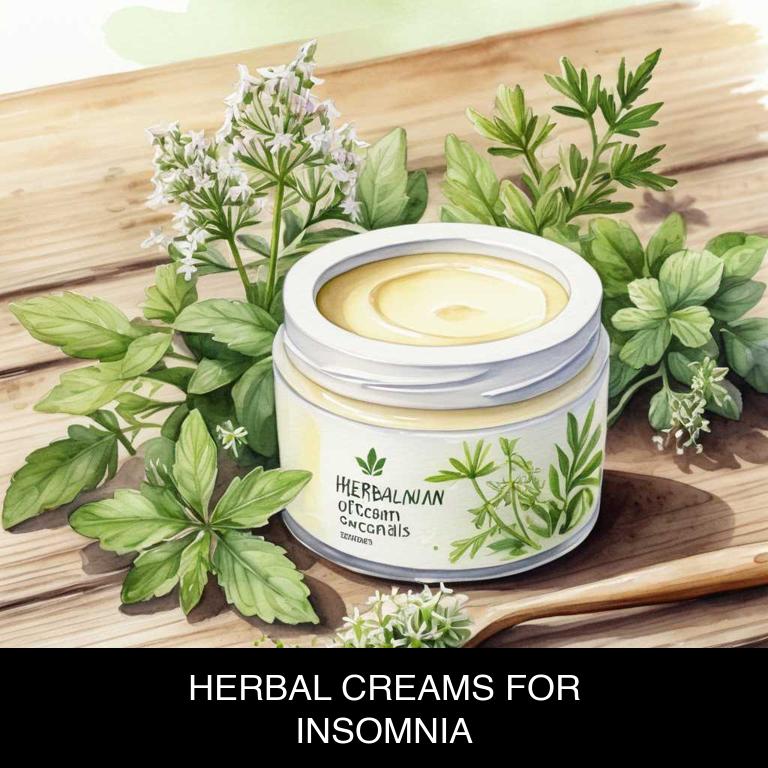
Herbal creams for insomnia are topical creams infused with natural herbs and essential oils that promote relaxation and help individuals fall asleep.
They work by reducing stress and anxiety, regulating body temperature, and promoting a restful sleep environment. Examples include chamomile, lavender, and valerian root creams, which have been shown to improve sleep quality and duration.
By using these creams, individuals can wake up feeling refreshed and rejuvenated, improving their overall well-being and quality of life.
The following article describes in detail the most important creams for insomnia, including medicinal properties, parts of herbs to use, and recipes for preparations.
- 1. Valeriana officinalis
- 2. Passiflora incarnata
- 3. Lavandula angustifolia
- 4. Melissa officinalis
- 5. Hyoscyamus niger
- 6. Ginkgo biloba
- 7. Citrus x aurantium
- 8. Scutellaria lateriflora
- 9. Tilia platyphyllos
- 10. Leonurus cardiaca
- What is the best combination of herbal creams to use for insomnia?
- What ailments similar to insomnia are treated with herbal creams?
1. Valeriana officinalis
Valeriana officinalis, also known as valerian, creams helps with insomnia because it contains valerenic acids and isovaleric acids, which have a sedative effect on the nervous system.
The valerian root has been used for centuries to promote relaxation and calmness, making it easier to fall asleep. The active compounds in the cream bind to GABA receptors in the brain, increasing the production of neurotransmitters that promote sleep.
This natural remedy has been shown to improve sleep quality and duration, helping individuals to wake up feeling rested and refreshed.
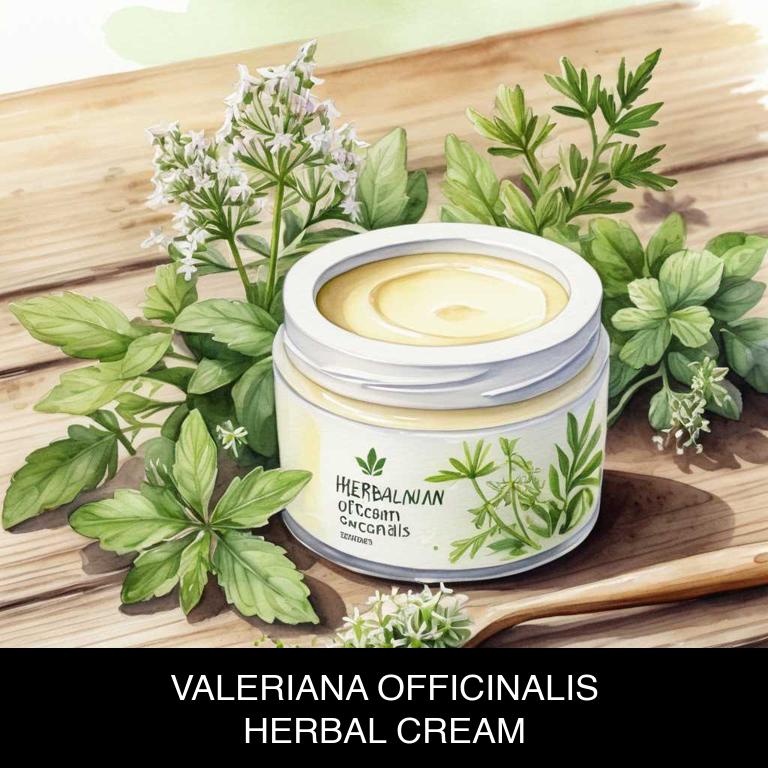
Medicinal Constituents
The list below shows the primary medicinal constituents in Valeriana officinalis creams that help with insomnia.
- Valerenic acid: This sesquiterpene helps with insomnia by interacting with GABA receptors in the brain, promoting relaxation and reducing anxiety.
- Valeranone: This sesquiterpenoid derivative has sedative properties, helping to calm the nervous system and induce sleep.
- Isovalerenic acid: This sesquiterpene has a sedative effect, possibly due to its ability to bind to GABA receptors, thereby promoting relaxation and reducing insomnia symptoms.
Parts Used
The list below shows the primary parts of valerian used to make creams for insomnia.
- Roots: They are the primary source of valerenic acid, a key compound responsible for the sedative and sleep-promoting effects of Valeriana officinalis.
- Leaves: Although less prominent than roots and rhizomes, leaves of Valeriana officinalis also contain valerenic acid and other compounds that contribute to its sleep-promoting properties.
Quick Recipe
The following recipe gives a procedure to make a basic valerian for insomnia.
- Harvest 20-30 grams of dried valeriana officinalis root from a reputable supplier or a well-maintained garden.
- Combine the dried root with 100ml of carrier oil such as sweet almond oil in a double boiler.
- Steep the mixture for 2-3 hours or overnight at a temperature between 60-80°c to create a valerian extract.
- Strain the mixture through a cheesecloth or a coffee filter into a clean glass container to remove the solids.
- Mix 2% of the valerian extract with 98% of a moisturizing base such as shea butter and beeswax in a heat-proof bowl.
2. Passiflora incarnata
Passiflora incarnata, also known as maypop, creams helps with insomnia because it contains a unique blend of active compounds, including flavonoids, alkaloids, and glycosides.
These natural ingredients interact with the brain's neurotransmitters to promote relaxation and reduce anxiety. By calming the mind and body, Passiflora incarnata creams can help individuals fall asleep faster and sleep more soundly, improving the overall quality of rest.
This natural solution is often preferred for its gentle, non-habit-forming properties.
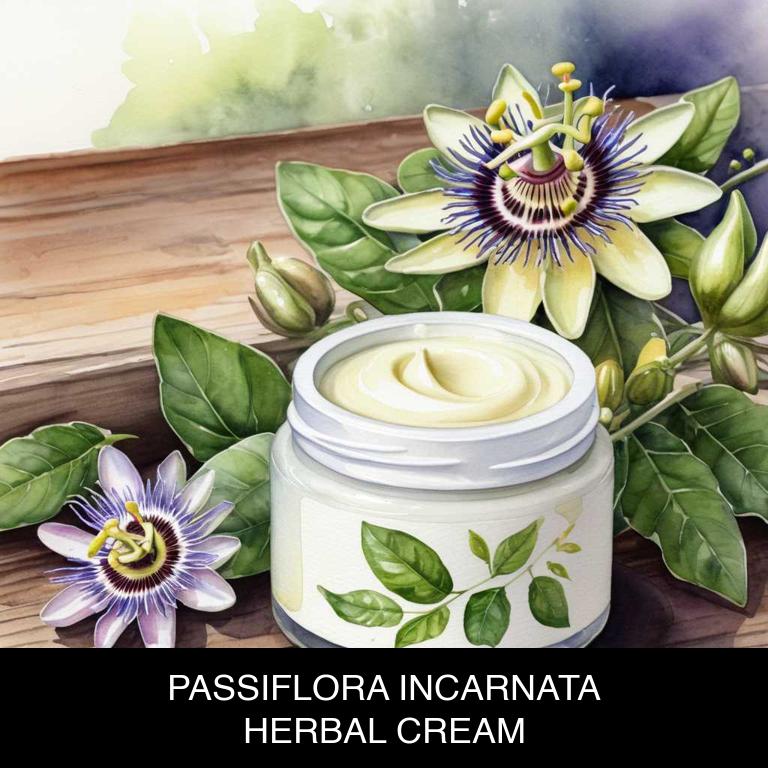
Medicinal Constituents
The list below shows the primary medicinal constituents in Passiflora incarnata creams that help with insomnia.
- Harmane: It's a neuroactive compound that may help reduce anxiety and stress, leading to improved sleep quality.
- Isopimarin: This sesquiterpene lactone has sedative and anxiolytic properties, which can help alleviate insomnia symptoms by promoting relaxation.
- Flavonoids: These compounds possess sleep-promoting properties by modulating the body's circadian rhythms and reducing inflammation.
Parts Used
The list below shows the primary parts of maypop used to make creams for insomnia.
- Leaves: The leaves of Passiflora incarnata are commonly used because they contain high levels of flavonoids and alkaloids, which are known to have sedative and calming effects.
- Fruits: The fruits of Passiflora incarnata are utilized due to their rich content of flavonoids and vitamins, which contribute to the relaxation and sleep-promoting properties of the creams.
- Roots: The roots of Passiflora incarnata are often used because they contain a high concentration of passifloric acid and other bioactive compounds, which help to induce relaxation and reduce anxiety.
Quick Recipe
The following recipe gives a procedure to make a basic maypop for insomnia.
- Harvest 1 pound of fresh passiflora incarnata flowers at dawn when dew is still present.
- Dry the flowers in a single layer at 100 degrees fahrenheit for 2 hours.
- Steep 1 tablespoon of dried flowers in 1 cup of coconut oil for 4 hours.
- Strain the oil through cheesecloth and discard the solids after 2 hours.
- Add 1 teaspoon of beeswax and 1 tablespoon of shea butter to the oil mixture and heat.
3. Lavandula angustifolia
Lavandula angustifolia, also known as English lavender, creams helps with insomnia because its calming properties can promote relaxation and reduce stress levels.
The creams contain linalool and linalyl acetate, two primary active compounds that have a sedative effect on the nervous system, making it easier to fall asleep and stay asleep throughout the night. Additionally, the gentle, soothing scent of lavender can calm the mind and body, creating a peaceful environment conducive to a restful night's sleep.
This can lead to improved sleep quality and overall well-being.

Medicinal Constituents
The list below shows the primary medicinal constituents in Lavandula angustifolia creams that help with insomnia.
- Linalool: A terpene that acts as a GABA receptor agonist, promoting relaxation and reducing anxiety, which helps improve sleep quality.
- Linalyl acetate: A terpene that has sedative and anxiolytic properties, contributing to a calming effect that aids in falling asleep and staying asleep.
- Rosmarinic acid: A phenolic compound that exhibits antioxidant and anti-inflammatory properties, helping to reduce stress and anxiety levels, making it easier to fall asleep and maintain a restful sleep.
Parts Used
The list below shows the primary parts of english lavender used to make creams for insomnia.
- Leaves: They contain a high concentration of essential oils, including linalool and linalyl acetate, which have a calming effect and promote relaxation.
- Flowers: They are rich in essential oils, including linalool and linalyl acetate, which have a soothing effect and help to reduce anxiety and promote better sleep.
- Stems: They also contain essential oils that contribute to the calming and sleep-promoting effects of creams made from Lavandula angustifolia.
Quick Recipe
The following recipe gives a procedure to make a basic english lavender for insomnia.
- Harvest 20g of dried lavandula angustifolia flowers at the peak of their fragrance and potency.
- Combine the dried lavandula angustifolia flowers with 50g of base oil such as jojoba oil in a double boiler.
- Steep the mixture for 2 hours to allow the herbal essence to infuse into the base oil.
- Strain the infused oil through a cheesecloth or coffee filter into a clean container.
- Whip 20g of beeswax and 50g of base oil together to create a smooth and creamy texture.
4. Melissa officinalis
Melissa officinalis, also known as lemon balm, creams helps with insomnia because of its calming and soothing properties.
The herb contains rosmarinic acid, which has been shown to reduce anxiety and promote relaxation. The cream's topical application allows for quick absorption, helping to calm the mind and body, making it easier to fall asleep. Additionally, Melissa officinalis creams may also help regulate sleep patterns and improve overall sleep quality, leading to a restful and rejuvenating night's sleep.
This natural remedy offers a gentle and non-invasive solution for individuals struggling with insomnia.
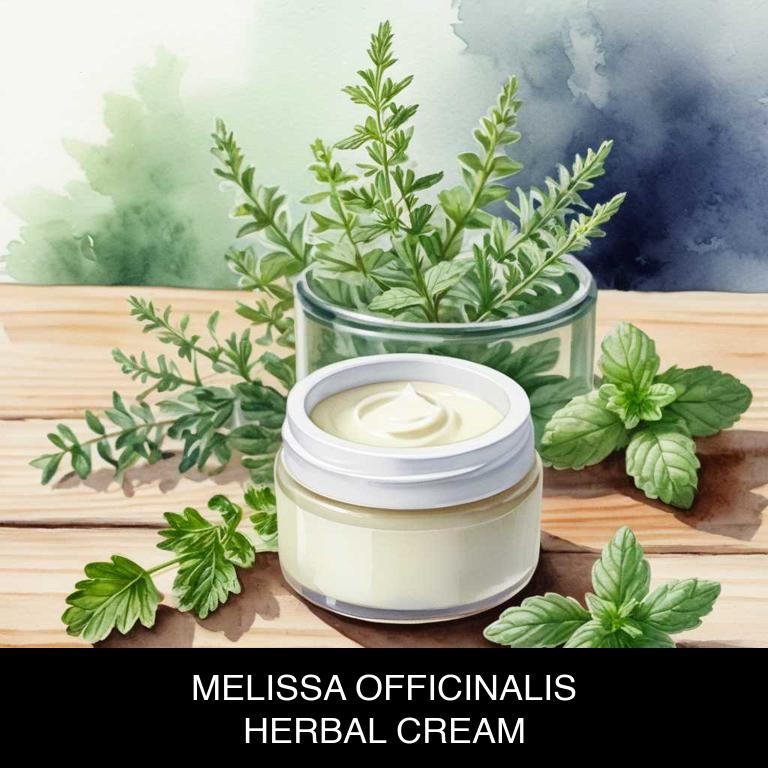
Medicinal Constituents
The list below shows the primary medicinal constituents in Melissa officinalis creams that help with insomnia.
- Rosmarinic acid: A phenolic compound that helps alleviate insomnia by reducing stress and anxiety through its antioxidant and anti-inflammatory properties.
- Linalool: A terpene that promotes relaxation and improves sleep quality by reducing the levels of stress hormones and inducing a calming effect on the nervous system.
- Limonene: A terpene that has a sedative effect, helping to reduce stress and anxiety, which can contribute to insomnia, and promote a restful night's sleep.
Parts Used
The list below shows the primary parts of lemon balm used to make creams for insomnia.
- Leaves: Known for their calming and sedative properties, which help to reduce stress and promote relaxation.
- Flowers: Contain flavonoids and other compounds that have a soothing effect on the nervous system, contributing to a restful sleep.
- Roots: Rich in melissic acid and other compounds that have a sedative and anxiolytic effect, helping to calm the mind and body.
Quick Recipe
The following recipe gives a procedure to make a basic lemon balm for insomnia.
- Gather 100g dried melissa leaves and steep them in 250ml of boiling water for 5-7 minutes to make a strong tea.
- Strain the tea through a cheesecloth or fine-mesh sieve into a bowl to separate the solids from the liquid.
- Combine 100g of shea butter with 50g of beeswax and 20g of coconut oil in a double boiler.
- Add the melissa tea to the shea butter mixture and heat it gently until the beeswax is fully melted and the mixture is well combined.
- Pour the mixture into a sterilized container and let it cool and solidify at room temperature for 30-40 minutes.
5. Hyoscyamus niger
Hyoscyamus niger, also known as henbane, creams helps with insomnia because of its sedative properties.
The cream is made from the dried flowers and seeds of the plant, which contain scopolamine and hyoscyamine. These compounds work by relaxing the muscles, calming the mind, and reducing anxiety. As a result, individuals can fall asleep faster and enjoy a more restful night's sleep.
The cream's soothing effects can also help alleviate restlessness and promote a peaceful sleep environment.
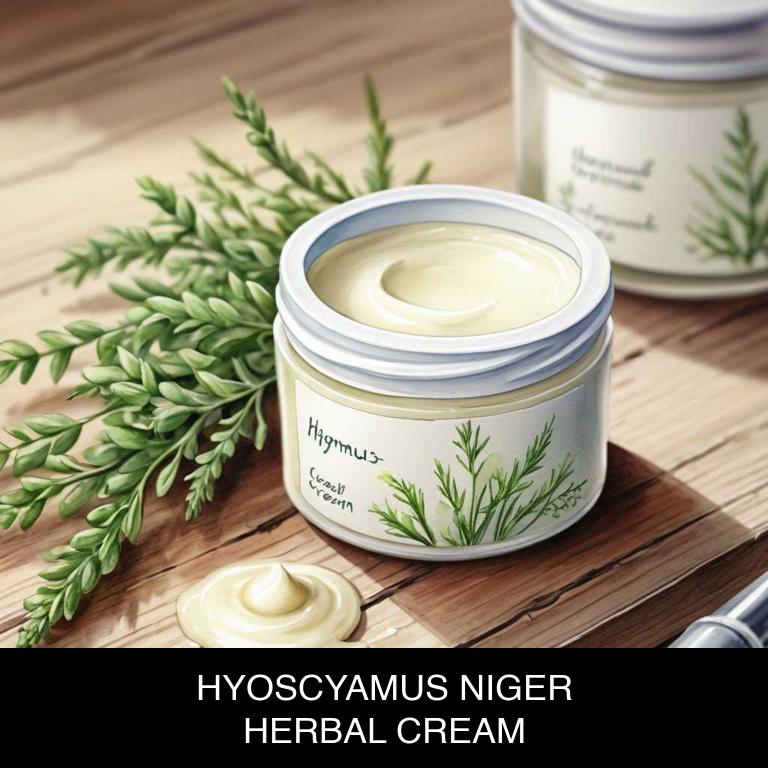
Medicinal Constituents
The list below shows the primary medicinal constituents in Hyoscyamus niger creams that help with insomnia.
- Scopolamine: Scopolamine is a tropane alkaloid that helps with insomnia by blocking the action of acetylcholine in the brain, which can lead to relaxation and reduced anxiety.
- Hyoscyamine: Hyoscyamine is a tropane alkaloid that helps with insomnia by reducing the activity of the central nervous system, leading to a decrease in restlessness and improved sleep quality.
- Solanine: Solanine is a glycoalkaloid that helps with insomnia by exerting a sedative effect, reducing anxiety and promoting relaxation, making it easier to fall asleep.
Parts Used
The list below shows the primary parts of henbane used to make creams for insomnia.
- Roots: Used due to their high concentration of scopolamine and hyoscyamine, which are known to have sedative properties.
- Leaves: Used as they contain a high amount of tropane alkaloids, including scopolamine and hyoscyamine, which help to induce sleep.
- Seeds: Used as they contain a significant amount of alkaloids, including hyoscyamine and scopolamine, which aid in promoting relaxation and reducing insomnia.
Quick Recipe
The following recipe gives a procedure to make a basic henbane for insomnia.
- Harvest 30-40 grams of hyoscyamus niger roots and leaves at dawn for optimal potency.
- Dry the harvested hyoscyamus niger in a warm place for 2-3 days to prevent mold.
- Grind 20 grams of dried hyoscyamus niger into a fine powder using a coffee grinder.
- Mix the powder with 100 grams of beeswax and 50 grams of coconut oil in a double boiler.
- Stir the mixture for 10 minutes and pour it into small containers to set for 30 minutes.
6. Ginkgo biloba
Ginkgo biloba, also known as maidenhair tree, creams helps with insomnia because it contains flavonoids and terpenoids that promote relaxation and improve sleep quality.
These compounds have been shown to enhance blood flow to the brain, reducing inflammation and oxidative stress that can disrupt sleep patterns.
Additionally, Ginkgo biloba creams have a calming effect on the nervous system, helping to quiet the mind and body, making it easier to fall asleep and stay asleep throughout the night.

Medicinal Constituents
The list below shows the primary medicinal constituents in Ginkgo biloba creams that help with insomnia.
- Flavonoids: These plant-based compounds have antioxidant properties that can help reduce inflammation and oxidative stress in the brain, promoting relaxation and improving sleep quality.
- Bilobalide: A sesquiterpene lactone found in Ginkgo biloba, bilobalide has been shown to have a sedative effect and can help regulate sleep-wake cycles by modulating the activity of neurotransmitters such as GABA and serotonin.
- Ginkgolides: A group of sesquiterpene lactones, ginkgolides have been found to have a calming effect on the nervous system and can help reduce anxiety and stress, leading to improved sleep quality and duration.
Parts Used
The list below shows the primary parts of maidenhair tree used to make creams for insomnia.
- Leaves: They are the most widely used part due to their high concentration of flavonoids and terpenoids, which have been shown to promote relaxation and improve sleep quality.
- Seeds: They are used for their potential to reduce anxiety and promote a restful sleep, possibly due to their high content of bilobalide, a compound with calming effects.
- Buds: They are sometimes used in combination with leaves or seeds, possibly due to their potential to enhance the sleep-promoting properties of the other parts or provide a complementary effect.
Quick Recipe
The following recipe gives a procedure to make a basic maidenhair tree for insomnia.
- Weigh 250g of ginkgo biloba extract standardized to 24% flavone glycosides and 6% bilobalide.
- Combine the ginkgo biloba extract with 30g of beeswax and 20g of shea butter in a mixing bowl.
- Heat the mixture in a double boiler at 160-180°f for 10-15 minutes to melt the ingredients.
- Add 10g of sweet almond oil and 5g of vitamin e oil to the melted mixture and stir well.
- Pour the mixture into sterilized jars and allow it to cool and solidify completely before use.
7. Citrus x aurantium
Citrus x aurantium, also known as bitter orange, creams helps with insomnia because they contain synephrine, a natural stimulant that promotes alertness and reduces drowsiness.
The citrus scent of these creams also has a calming and uplifting effect, helping to regulate the body's circadian rhythms and promote a restful night's sleep.
By combining relaxation and stimulation, Citrus x aurantium creams provide a unique approach to managing insomnia, allowing individuals to fall asleep faster and sleep more soundly throughout the night.
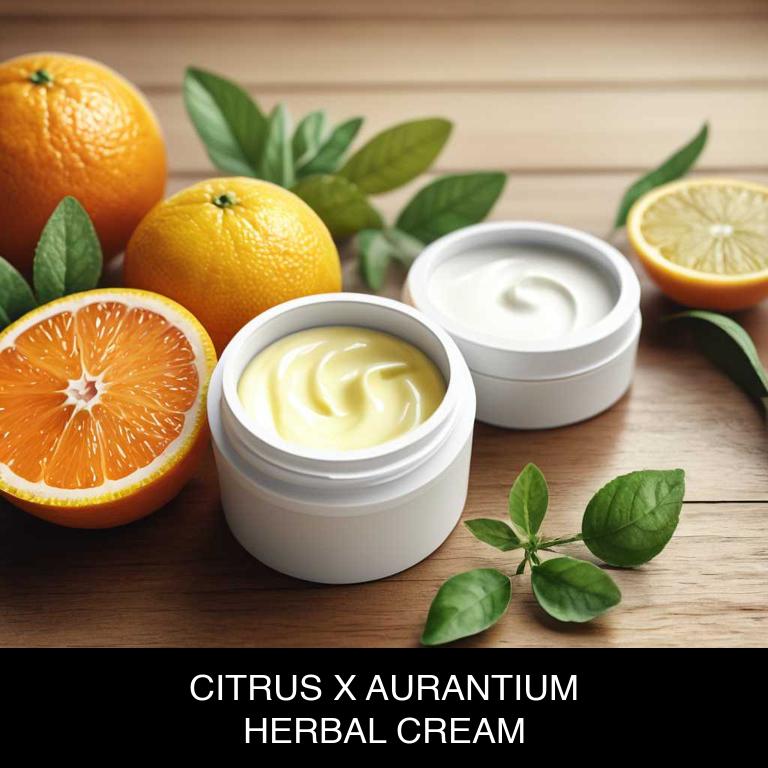
Medicinal Constituents
The list below shows the primary medicinal constituents in Citrus x aurantium creams that help with insomnia.
- Synephrine: Acts as a stimulant and increases alertness, helping to combat fatigue and promote a good night's sleep.
- Naringenin: Exhibits sedative and anxiolytic properties, potentially reducing stress and anxiety that contribute to insomnia.
- Aglycone of naringenin: Also known as Naringenin aglycone or Naringenin-7-glucoside, it has sedative effects that can help regulate sleep patterns and improve sleep quality.
Parts Used
The list below shows the primary parts of bitter orange used to make creams for insomnia.
- Seeds: They contain a compound called furanocoumarin, which has sedative properties that can help individuals fall asleep.
- Barks: They contain alkaloids, including aurantiamide, which can have a sedative effect and help reduce anxiety, promoting a good night's sleep.
Quick Recipe
The following recipe gives a procedure to make a basic bitter orange for insomnia.
- Harvest fresh organic citrus peel in the early morning to capture the highest amount of essential oils available.
- Dry the citrus peel in a food dehydrator at 95 degrees fahrenheit for 24 hours to remove excess moisture.
- Combine 50 grams of dried citrus peel with 100 grams of unsalted butter in a double boiler and heat.
- Add 10 grams of beeswax to the mixture and stir constantly for 10 minutes until fully incorporated and melted.
- Allow the cream to cool and thicken for 30 minutes before transferring it to a glass jar for storage.
8. Scutellaria lateriflora
Scutellaria lateriflora, also known as skullcap, creams helps with insomnia because of its calming and sedative properties.
The herbal extract has been traditionally used to promote relaxation and reduce stress levels, making it easier to fall asleep and stay asleep.
The creams work by penetrating deep into the skin to deliver the active ingredients, which then interact with the body's natural chemistry to produce a sense of calm and tranquility, ultimately leading to improved sleep quality and a restful night's sleep.
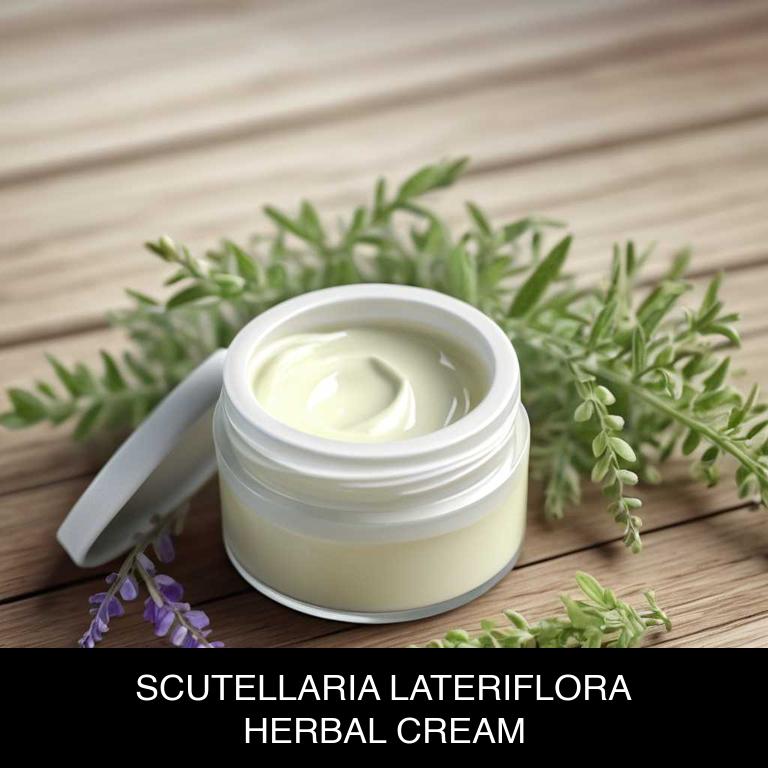
Medicinal Constituents
The list below shows the primary medicinal constituents in Scutellaria lateriflora creams that help with insomnia.
- Baicalin: Baicalin is a flavonoid glycoside that helps with insomnia by promoting relaxation and reducing anxiety due to its sedative properties.
- Scutellarin: Scutellarin is an iridoid glycoside that helps with insomnia by reducing stress and promoting a good night's sleep through its anxiolytic and hypnotic effects.
- Volatile oils: These volatile oils have a sedative effect on the nervous system, helping with insomnia by promoting relaxation and reducing restlessness.
Parts Used
The list below shows the primary parts of skullcap used to make creams for insomnia.
- Leaves: They are used due to their calming and sedative properties.
- Roots: They are used because of their ability to promote relaxation and reduce anxiety.
- Flowers: They are used for their soothing and sedative effects, which help in inducing sleep.
Quick Recipe
The following recipe gives a procedure to make a basic skullcap for insomnia.
- Harvest fresh scutellaria lateriflora flowers in the morning after the dew has dried off.
- Infuse 1 cup of dried scutellaria lateriflora flowers in 2 cups of boiling water for 10 minutes.
- Strain the liquid through a cheesecloth and discard the solids to obtain a clear infusion.
- Mix 1/2 cup of beeswax with 1/2 cup of coconut oil in a double boiler over low heat.
- Combine the scutellaria lateriflora infusion with the melted beeswax and coconut oil mixture to create a smooth cream.
9. Tilia platyphyllos
Tilia platyphyllos, also known as broad-leaved lime, creams helps with insomnia because of its soothing and calming properties.
The flowers and leaves of the Tilia platyphyllos plant contain a high concentration of apigenin and linalool, which have a sedative effect on the body. These compounds help to relax the mind and body, promoting a peaceful state of mind and reducing stress levels.
By applying a Tilia platyphyllos cream topically, individuals can experience a calming effect, making it easier to fall asleep and stay asleep throughout the night.
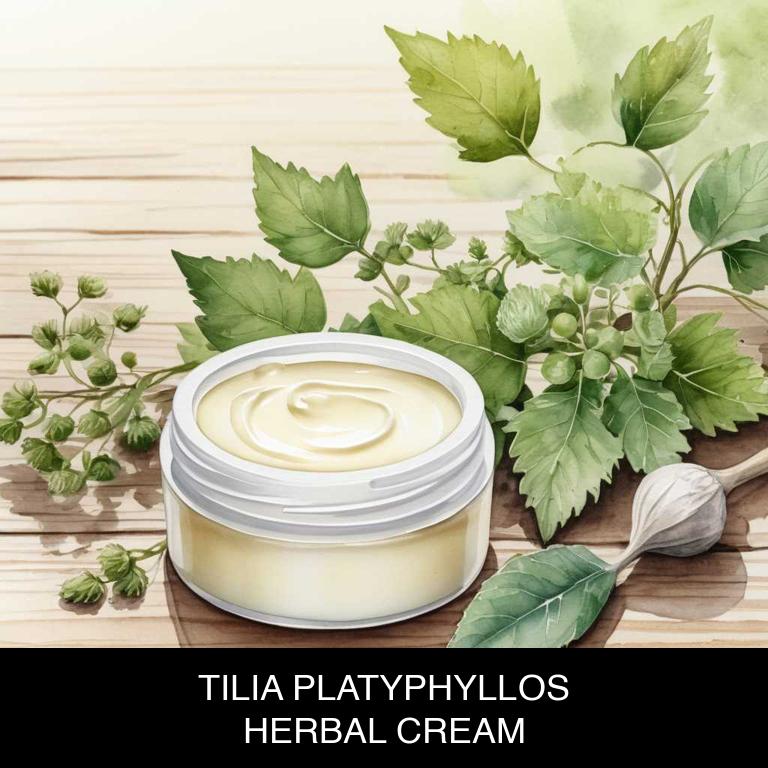
Medicinal Constituents
The list below shows the primary medicinal constituents in Tilia platyphyllos creams that help with insomnia.
- Triterpenoids: These compounds have sedative properties, helping to calm the mind and body, leading to improved sleep quality and duration.
- Flavonoids: Quercetin in Tilia platyphyllos has been shown to have a sedative effect by reducing anxiety and promoting relaxation, making it easier to fall asleep.
- Tannins: The astringent properties of tannins in Tilia platyphyllos help to reduce inflammation and promote relaxation, contributing to improved sleep and reduced insomnia symptoms.
Parts Used
The list below shows the primary parts of broad-leaved lime used to make creams for insomnia.
- Leaves: Used for their sedative and calming properties to help with insomnia.
- Flowers: Used to create a soothing and relaxing effect to aid in falling asleep.
- Barks: Used for their calming properties to reduce stress and anxiety, which can contribute to insomnia.
Quick Recipe
The following recipe gives a procedure to make a basic broad-leaved lime for insomnia.
- Harvest 500g of tilia platyphyllos flowers and leaves in the early morning when the plant is at its highest water content.
- Dry the harvested plant material in a well-ventilated area at 50°c for 2 hours to reduce its moisture content.
- Infuse 250g of the dried tilia platyphyllos in 1l of jojoba oil at 60°c for 4 hours to create a plant oil extract.
- Mix the tilia platyphyllos extract with 100g of beeswax and 100g of shea butter at 60°c to create a uniform cream base.
- Stir the mixture thoroughly and pour it into containers at room temperature for 24 hours to set the cream.
10. Leonurus cardiaca
Leonurus cardiaca, also known as motherwort, creams helps with insomnia because of its ability to promote relaxation and reduce anxiety levels.
The herb contains compounds such as leonurine and stachydrine, which have been shown to have a sedative effect on the nervous system. By calming the mind and body, Leonurus cardiaca creams can help individuals fall asleep faster and improve the quality of their sleep.
This, in turn, can lead to a range of benefits, including improved mood and increased energy levels.
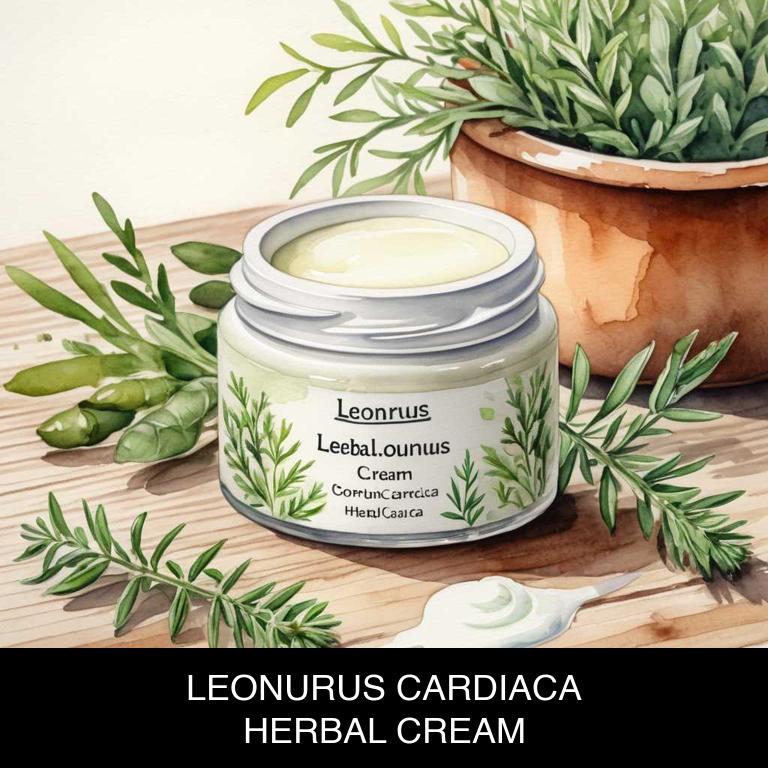
Medicinal Constituents
The list below shows the primary medicinal constituents in Leonurus cardiaca creams that help with insomnia.
- Iridoids: Iridoids, specifically leonurine and rosmarinic acid, have been found to have sedative and hypnotic properties, helping to reduce stress and anxiety that can contribute to insomnia.
- Triterpenoids: Triterpenoids, such as leonurine's triterpene derivatives, have been shown to have a sedative effect on the central nervous system, promoting relaxation and reducing restlessness, which can help with falling asleep.
- Phenylethanoids: Phenylethanoids, including acteoside and leonurine, have been found to possess anxiolytic (anxiety-reducing) properties, which can help alleviate the anxiety and stress that can lead to insomnia.
Parts Used
The list below shows the primary parts of motherwort used to make creams for insomnia.
- Leaves: They contain a significant amount of rosmarinic acid and flavonoids, which have sedative and calming properties.
- Flowers: They are rich in flavonoids and terpenoids, which contribute to their sedative and sleep-inducing effects.
- Roots: They are a source of alkaloids like leonurine and stachydrine, which have been traditionally used to treat anxiety and insomnia.
Quick Recipe
The following recipe gives a procedure to make a basic motherwort for insomnia.
- Harvest 1/4 cup of dried leonurus cardiaca flowers in late summer when they are in full bloom.
- Combine 2 tablespoons of dried flowers with 2 tablespoons of coconut oil in a saucepan.
- Heat the mixture over low heat for 1 hour then remove from heat and let cool.
- Strain the mixture through a cheesecloth into a bowl and discard the solids.
- Add 2 tablespoons of beeswax and 2 tablespoons of shea butter to the mixture and whip until smooth.
What is the best combination of herbal creams to use for insomnia?
The best combination of herbal creams that help with insomnia is a blend of valerian root, lavender, and chamomile.
Valerian root cream promotes relaxation and calms the nervous system, while lavender cream soothes the mind and body, reducing stress and anxiety. Chamomile cream further calms the body, reducing inflammation and promoting a restful sleep.
Applying these creams together before bedtime can help alleviate insomnia symptoms and promote a good night's sleep.
What ailments similar to insomnia are treated with herbal creams?
Ailments similar to insomnia/creams.html">insomnia/creams.html">insomnia that are treated with herbal creams are anxiety, stress, and restlessness.
Herbal creams containing ingredients like passionflower, valerian root, and lavender can help calm the mind and promote relaxation.
These creams can be applied topically to the skin, allowing the active ingredients to absorb into the bloodstream and promote a sense of tranquility.